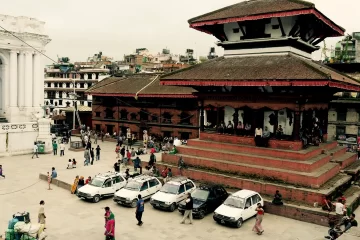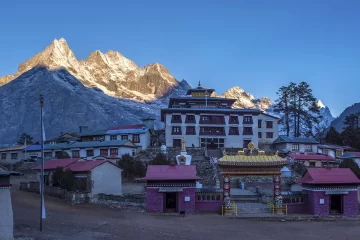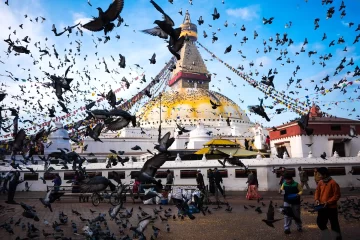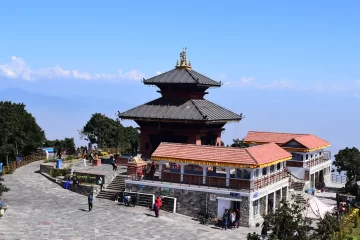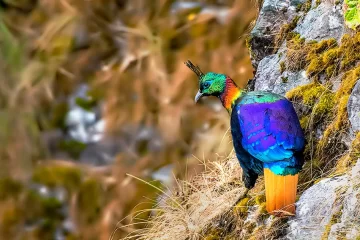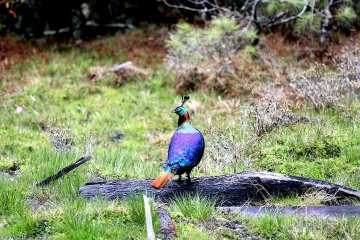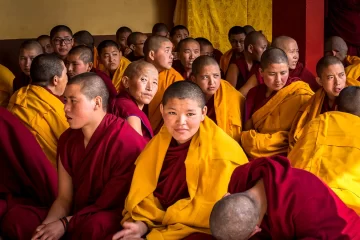Tihar Festival in Nepal: A Festival of Lights, Love, and Bonding
Tihar, the festival of lights often recognized as Deepawali or Yamapanchak, is one of the biggest festivals in Hindu mythology generally celebrated in Nepal and some states of India for the win of good over evil. Tihar, also known as Diwali is glorified by lighting ‘Diyo’ all over the home believing the arrival of Goddess Laxmi with lots of happiness and wealth.
Tihar is usually celebrated for five days beginning with Trayodashi; the day of worship of Crow and ends after Bhai Tika. In Tihar four animals and birds associated with the Hindu god of death;Yamaraj are worshipped and this duration is known as Yamapanchak.
The five days of Tihar include the worship of Crow, Dog, Bull, Goddess Laxmi, and the day of Bhai tika. Tihar lies just in between Dashain and Chhat in October and November.
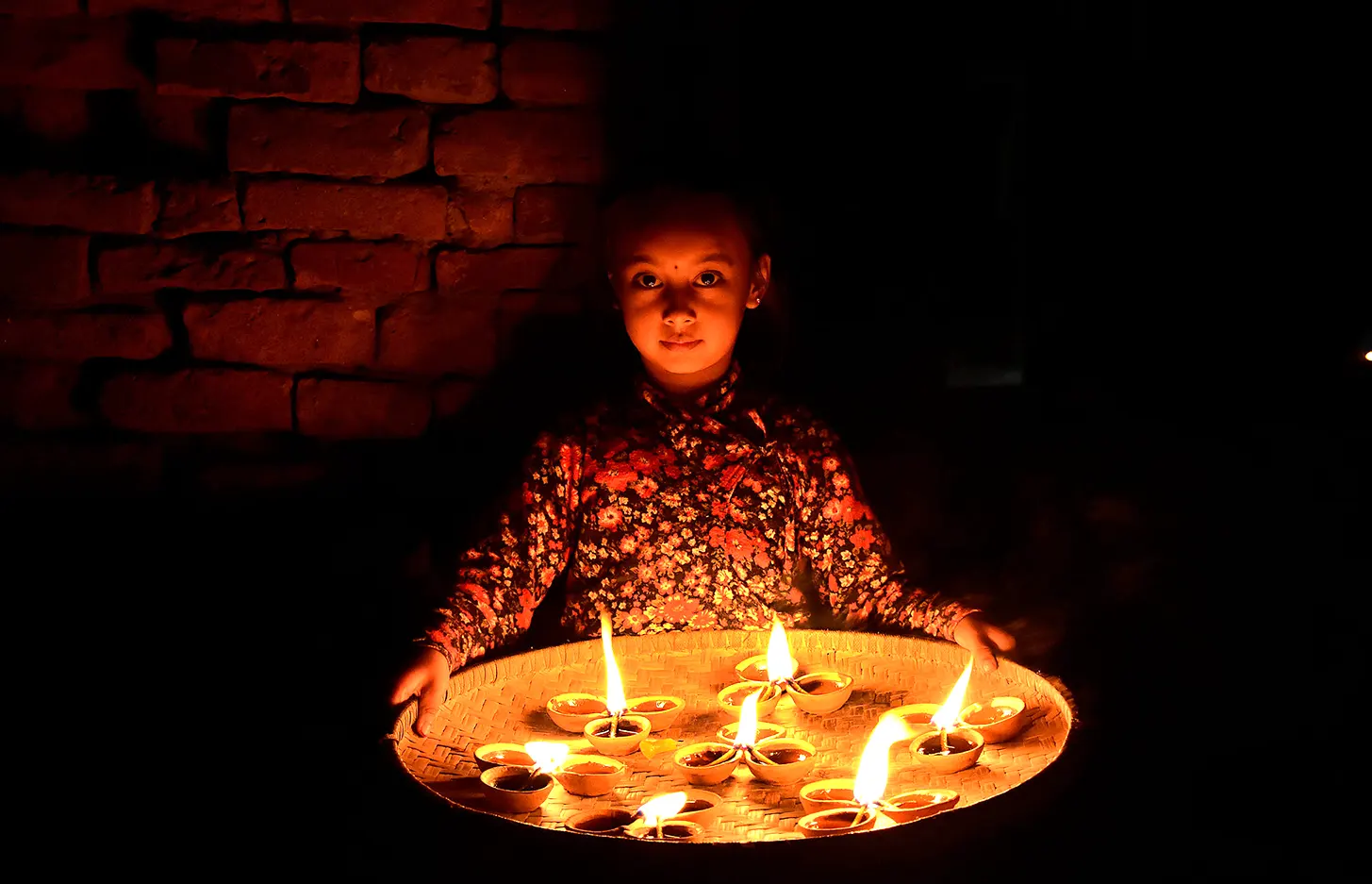
Celebration of Tihar Festival in Nepal
Tihar is celebrated in different fashions throughout the country. This festival is celebrated as the name of ‘Swanti’ among the Newar community and Deepawali among the Terai belt people. Just before the arrival of Tihar, houses, and rooms are painted and decorated making them clean and pure which is stated as worthy of welcoming Goddess Laxmi.
People make Rangoli of colored rice flour as a sacred welcoming the goddess, particularly on the day of Laxmi Puja. Generally among the Nepalese communities, Tihar is announced decorating the home with lighting Diyos, Candles, Electric lamps, and burning firecrackers.
People perform a traditional dance also known as Deusi-Bhailo enchanting the blessings in every house of villages. This interesting tradition of playing deuce and bhaiis taken as a big importance among Nepalese people. During the days of Tihar, people only eat vegan foods like sweets, fruits, and vegetables. The female member of the family cooks popular festive cuisine like Sel-Roti, Andrasa, Babar, Kasaar, and many other foods.
Tihar is the once-upon-a-year festival that brings an atmosphere of happiness, wealth, and prosperity to the country. The government also gives national holidays during this festival. To celebrate Tihar with their loved ones, many people return from their work even from abroad or town. Tihar delivers the happy moment with an occasion of get together of every member of the family. During get together, people play cards and dice for entertainment purposes spreading love and care for each other.
On the last day of Yamapanchak, sisters pray for the long life of their brothers putting seven colored tika as blessings on the forehead of their brothers along with Mala (garland) made of Marigold and Makhamali (Common globe amaranth) flowers. Sister also gives sweets and fruits for the better health of the brothers. Bhai tika is a great example of a festival revealing the bond between brother and sister.
The five days of Yamapanchacan be further explained as
1. KaagTihar
This is the beginning day of the Tihar festival with the worship of Crow. According to ancient Hindu mythology, Crow is referred to as the messenger of death sent by the God of Death;Yamaraj. Crows are worshipped on this day offering grains, seeds, and sweets. According to an old belief, the cawing of crows resembles sadness. KaagTihar is celebrated by worshipping the crows to prevent death witnessing Danteras; a god of medicine in Hindu mythology. People believe in buying jewelry and assets on this day is very auspicious.
2. KukkurTihar
KukkurTihar is the second day of Tihar festival. Dogs are worshipped on this day as the avatar of God Bhairava. Dogs are worshipped putting tika, a garland of marigolds, and offering delicious foods. Kukkurtihar symbolizes the relationship between dogs and humans. According to the old sculptures, it is said that at the gates of heaven, the Yudisthir refuses to enter without a dog and thus the bond between human and dog was established from Mahabharata.
3.GaiTihar/ Laxmi Puja
The third day of Tiharis calledGaiTihar where the cow is worshipped. The cow is considered as Bahan of goddess Laxmi who is considered as the goddess of wealth and prosperity. Cow gives milk that is used to make different dairy products. It is believed that the urine of cows is beneficial to health and dung is to produce biogas and is even used as fertilizer. On this day cow is decorated with colors, tika, and garlands and offered with grains and sweets.
On the same day, the trees of the Banana are used to make gates cleaning the yard with cow dung to make the house pure. Later on the noon, Goddess Laxmiis worshipped at the SubhaSahit (Perfect Time) as suggested by astrologers. Various rangoli, candles, Diyos, and Lamps are decorated to welcome goddess Laxmi into the house.
People cook different sweets like Sel roti to offer to Goddess Laxmi. After worshipping Goddess Laxmi, the females and girls in the village play Bhailo as the tradition. It is said that Bhailini is the avatar of Goddess Laxmi. Bhailini sings and dances to Bhailo songs and asks for sweets and Dakchhina (money) and in return they bless the house with wealth and prosperity. During Bhailo fireworks are prohibited as it creates a panic moment in girls due to intolerable sound and fire.
4. Govardhan Puja
This is the fourth day of the Tihar festival where Goru (Ox), Dung, and Shed are worshipped. On this day shed is cleaned and cow dung is made like a mountain and ox are decorated with different flowers, colors, Tika, and garland. Ox is worshipped and fed grains, Babar- Roti, and other sweets. Later in the noon the male children and youths play Deusi and visit everyone’s house to offer blessings. On the same day in the Newar community, people have a unique tradition of worshipping souls.
5. Bhai Tika
Bhai Tika is the last day of Yamapancha where the sister puts a tika of seven colors on the brother’s forehead. On this day brother travels to their sister’s home to put on a tika and take blessings. Bhai tika symbolizes the actual bond between a sister and a brother. According to old sculptures, Yamuna’s brother fell ill and the god of death Yamaraj came to take his soul. Yamuna cried and prayed to leave her brothers alive until she finishes her puja and the until the garland faded up. She put tika and the garland of the Makhamaliflower which never faded and Yamaraj could never take the soul of her brother.
This festival proves the love of a sister to her brother. In Bhai Tika, the brother also put Tika and worships his sister regardless of age. After performing rituals, both brother and sister along with other friends go to play Deusi and Bhailo together resembling the unity between them

